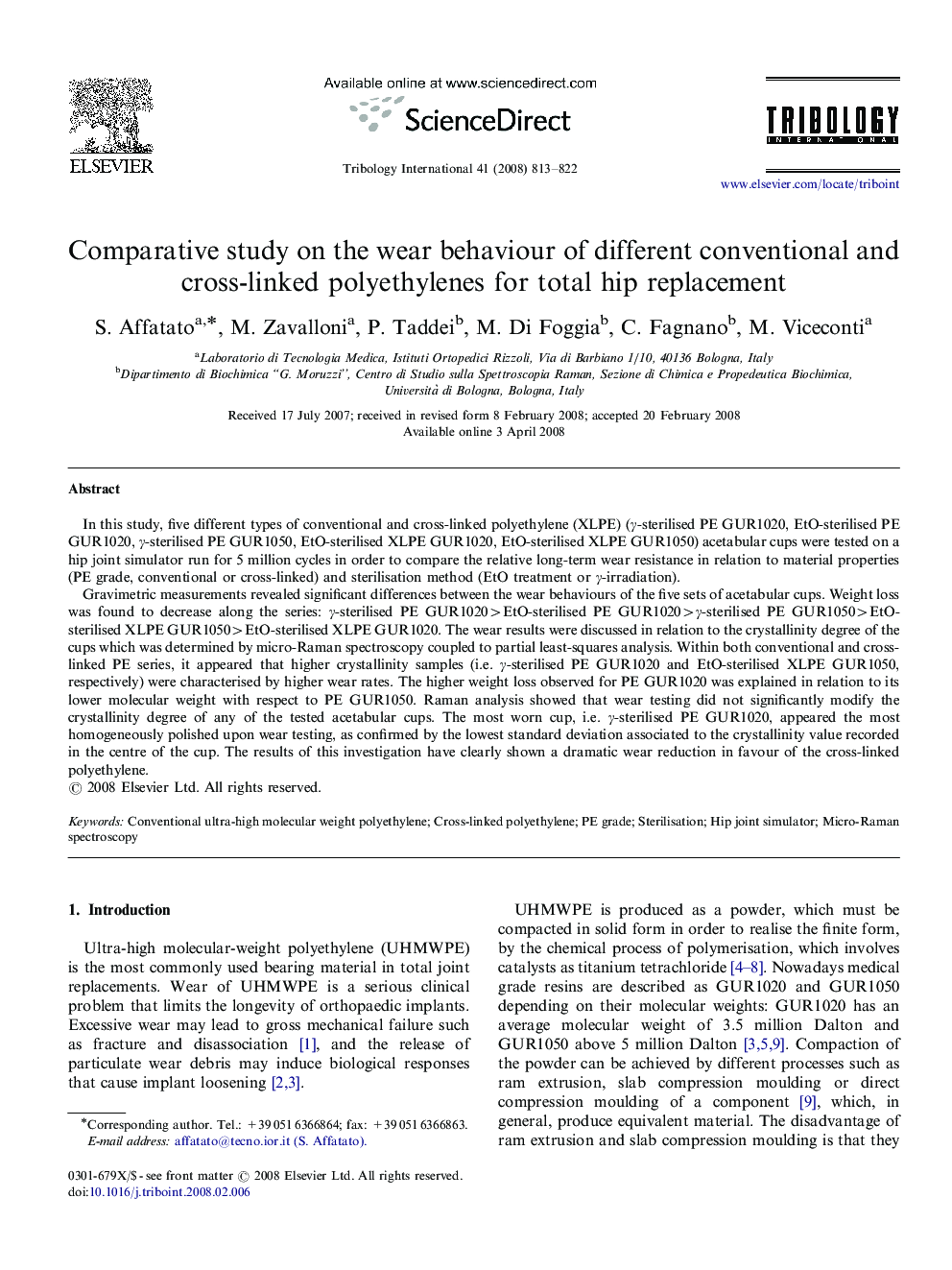| Article ID | Journal | Published Year | Pages | File Type |
|---|---|---|---|---|
| 616277 | Tribology International | 2008 | 10 Pages |
In this study, five different types of conventional and cross-linked polyethylene (XLPE) (γ-sterilised PE GUR1020, EtO-sterilised PE GUR1020, γ-sterilised PE GUR1050, EtO-sterilised XLPE GUR1020, EtO-sterilised XLPE GUR1050) acetabular cups were tested on a hip joint simulator run for 5 million cycles in order to compare the relative long-term wear resistance in relation to material properties (PE grade, conventional or cross-linked) and sterilisation method (EtO treatment or γ-irradiation).Gravimetric measurements revealed significant differences between the wear behaviours of the five sets of acetabular cups. Weight loss was found to decrease along the series: γ-sterilised PE GUR1020>EtO-sterilised PE GUR1020>γ-sterilised PE GUR1050>EtO-sterilised XLPE GUR1050>EtO-sterilised XLPE GUR1020. The wear results were discussed in relation to the crystallinity degree of the cups which was determined by micro-Raman spectroscopy coupled to partial least-squares analysis. Within both conventional and cross-linked PE series, it appeared that higher crystallinity samples (i.e. γ-sterilised PE GUR1020 and EtO-sterilised XLPE GUR1050, respectively) were characterised by higher wear rates. The higher weight loss observed for PE GUR1020 was explained in relation to its lower molecular weight with respect to PE GUR1050. Raman analysis showed that wear testing did not significantly modify the crystallinity degree of any of the tested acetabular cups. The most worn cup, i.e. γ-sterilised PE GUR1020, appeared the most homogeneously polished upon wear testing, as confirmed by the lowest standard deviation associated to the crystallinity value recorded in the centre of the cup. The results of this investigation have clearly shown a dramatic wear reduction in favour of the cross-linked polyethylene.
